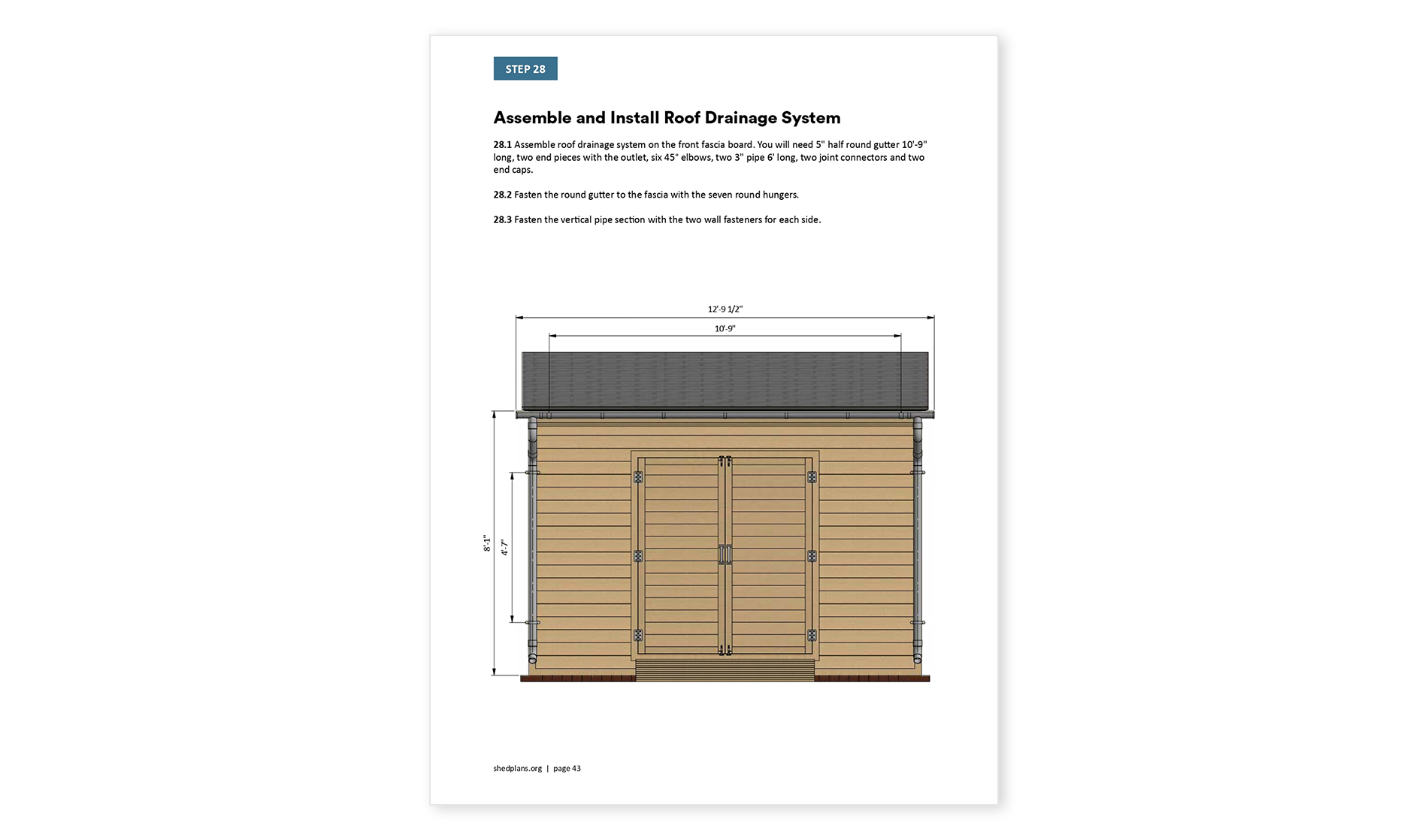Judul : How to Build a Practical 8x12 Lean-To Storage Shed on a Budget
link : How to Build a Practical 8x12 Lean-To Storage Shed on a Budget
How to Build a Practical 8x12 Lean-To Storage Shed on a Budget

Constructing a Budget-Friendly 8x12 Lean-To Storage Shed
This comprehensive guide details the process of building a practical and cost-effective 8x12 lean-to storage shed. Lean-to structures, owing to their simplified design, offer significant savings in both materials and labor compared to freestanding sheds. This guide prioritizes budget-conscious construction techniques while maintaining structural integrity and longevity. We will cover each stage meticulously, from planning and material selection to the final finishing touches.
Phase 1: Planning and Preparation
Thorough planning is crucial for a successful project. Ignoring this stage often leads to costly mistakes and delays. Before purchasing any materials, meticulously plan every aspect of your shed.
Site Selection and Assessment
Choosing the right location is paramount. Consider factors like:
- Proximity to existing structures: Lean-tos require a supporting wall; ensure the chosen wall is structurally sound and suitable for anchoring.
- Sunlight and drainage: Select a location with adequate sunlight for ventilation and a slightly sloped area to prevent water accumulation.
- Accessibility: Ensure easy access for material delivery and future use.
- Local building codes: Familiarize yourself with local regulations pertaining to shed construction. Permits might be required depending on your location and the shed's size.
Design and Material Selection
For a budget-conscious approach, prioritize readily available and cost-effective materials. Pressure-treated lumber offers durability and resistance to rot and insect infestation, making it a suitable choice for the frame. For the roof, asphalt shingles are an economical and readily available option. Consider reclaimed materials whenever possible, as this can significantly reduce costs.
- Framing Lumber: Pressure-treated 4x4 posts, 2x4 studs, and 2x6 rafters are recommended for structural integrity.
- Sheathing: Oriented Strand Board (OSB) or plywood are cost-effective options for wall and roof sheathing.
- Roofing: Asphalt shingles are a budget-friendly and readily available choice.
- Siding: Depending on your budget and aesthetic preferences, options range from simple plywood siding to more durable vinyl or metal siding.
- Fasteners: Galvanized nails and screws are recommended to prevent rust and corrosion.
Create detailed drawings of your shed, including dimensions, materials list, and a step-by-step construction plan. This detailed plan will serve as a valuable guide throughout the construction process, minimizing errors and material waste.
Phase 2: Foundation and Framing
A robust foundation is essential for the longevity of your shed. A simple concrete slab is ideal, but for a more budget-friendly approach, a gravel base might suffice, provided the ground is relatively level and well-drained.
Foundation Construction
For a concrete slab, excavate a shallow trench, add a layer of gravel for drainage, and pour the concrete. Ensure the slab is level and allows for proper drainage. A gravel base involves leveling the ground, adding several inches of gravel, and compacting it thoroughly. The choice between these depends on your budget and soil conditions.
Framing the Walls and Roof
Begin by constructing the frame for the walls using pressure-treated 4x4 posts anchored securely to the supporting wall and the foundation. Erect 2x4 studs at 16-inch intervals, ensuring they are plumb and properly braced. For the roof, construct rafters using 2x6 lumber, calculating the correct length and spacing for your chosen roof pitch. Ensure proper overhang for protection from rain.
Precise measurements and careful construction are crucial at this stage. Using a level and square consistently will prevent future issues.
Phase 3: Sheathing, Roofing, and Siding
This phase involves covering the frame with sheathing and installing the roofing and siding materials.
Sheathing the Walls and Roof
Apply OSB or plywood sheathing to both the walls and the roof, ensuring proper alignment and fastening. This sheathing provides a solid base for the roofing and siding materials.
Roofing Installation
Install the chosen roofing material (asphalt shingles in this budget-conscious approach) according to the manufacturer's instructions. Proper installation is crucial for preventing leaks and ensuring longevity. Consider adding underlayment for extra protection.
Siding Installation
Apply the chosen siding material, whether plywood, vinyl, or metal. Ensure proper overlap and fastening to prevent water damage. Consider adding trim pieces for a finished look.
Phase 4: Doors, Windows, and Finishing Touches
The final phase involves installing doors and windows and adding any finishing touches.
Door and Window Installation
Install a sturdy door suitable for your needs. Consider pre-hung doors to simplify installation. If including windows, ensure they are properly sealed to prevent drafts and water leaks. Measure carefully to ensure a precise fit.
Finishing Touches
Apply a coat of sealant or paint to protect the wood from the elements. This will enhance the shed's lifespan and improve its appearance. Consider adding shelving or other interior features as needed.
Budget Considerations and Cost-Saving Tips
Building a shed on a budget requires careful planning and resourcefulness. Here are several cost-saving tips:
- Utilize reclaimed materials: Explore options for using reclaimed lumber or other materials whenever possible.
- Shop around for materials: Compare prices from different suppliers to find the best deals.
- Consider DIY options: Doing as much of the work yourself as possible will significantly reduce labor costs.
- Prioritize essential features: Focus on the fundamental aspects of the shed, postponing non-essential features for later.
- Buy in bulk: Purchasing materials in bulk can often result in significant savings.
- Borrow or rent tools: Avoid purchasing tools you may only use once; borrow them from friends or rent them from a tool rental company.
By carefully following these guidelines and employing smart budgeting techniques, you can successfully build a practical and cost-effective 8x12 lean-to storage shed.
thank for reading article How to Build a Practical 8x12 Lean-To Storage Shed on a Budget
now you reading How to Build a Practical 8x12 Lean-To Storage Shed on a Budget with the link https://gardenshedbuy.blogspot.com/2024/11/how-to-build-practical-8x12-lean-to.html
0 Response to "How to Build a Practical 8x12 Lean-To Storage Shed on a Budget"
Post a Comment